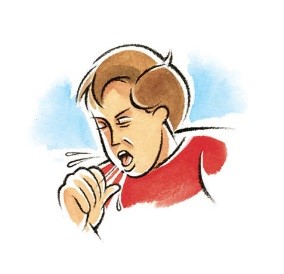Complications - Opportunistic Infections (OIs)
People infected with HIV eventually develop symptoms that usually last a long time and are often severe. These symptoms include enlarged lymph glands, fever, tiredness, loss of appetite and weight loss, diarrhea, and night sweats.
As the immune system becomes weaker, the infected person becomes more susceptible to illnesses that normally do not occur in healthy people.
When a person living with HIV gets certain infections (called opportunistic infections, or OIs), he or she will get a diagnosis of AIDS, the most serious stage of HIV infection. AIDS is also diagnosed if a type of blood cell that fights infection (known as CD4 cells) falls below a certain level in persons with HIV. These blood cells are a critical part of a person's immune system.
Opportunistic infections are named that because they take advantage of damage to the immune system and rarely occur in people with a healthy immune system. Healthcare professional must stay current with these guidelines and yearly updates. CDC has developed guidelines in conjunction with U.S. Public Health Service and IDSA for the prevention of opportunistic infections among HIV-infected individuals. The report gives guidelines specific to each type of opportunistic infection.
The most common opportunistic infections are:
• Pneumocystis carinii pneumonia (PCP)
• Cytomegalovirus infection (CMV)
• Toxoplasmosis
• Cryptococcus
• Tuberculosis
• Candidiasis
• Kaposis's sarcoma
• Mycobacterium avium complex (MAC)
• Cryptosporidium enterocolitis
• HIV dementia
• Malignancies (cancers)
• HIV lipodystrophy
• Chronic wasting from HIV infection
Pneumocystis carinii pneumonia (PCP)
PCP is a pneumonia caused by the fungal organism Pneumocystis carinii, which is widespread in the environment, and is not a pathogen (does not cause illness) in healthy individuals.
In clients with AIDS, PCP usually develops slowly and is less severe than for clients with PCP who do not have AIDS. PCP was a relatively rare infection prior to the AIDS epidemic. Before the use of preventive antibiotics for PCP, up to 70% of individuals in the U.S. with advanced AIDS developed PCP.
Symptoms are fever, cough, often mild and dry, shortness of breath, especially with exertion, and rapid breathing.
Cytomegalovirus (CMV)
CMV is a large herpes-type virus commonly found in humans that can cause serious infections in people with impaired immunity. CMV esophagitis, which may lead to ulcers, is treated with antiviral medications, which may stop the replication of the virus but will not destroy it.
Toxoplasmosis
Toxoplasmosis is found in humans worldwide, and in many species of animals and birds. Cats are the definitive host of the parasite.
Human infection results from ingestion of contaminated soil, careless handling of cat litter, ingestion of raw or undercooked meat (lamb, pork, and beef), transmission from a mother to a fetus through the placenta (congenital infection), or by blood transfusion or solid organ transplantation. Over 80-90% of primary infections produce no symptoms. The incubation period for symptoms is 1 to 2 weeks. Symptoms are in immunosuppressed persons:
• Brain lesions associated with fever, headache, confusion, seizures, and abnormal neurological findings.
• Retinal inflammation causing blurred vision.
Cryptococcus
Cryptococcus neoformans is yeast that seldom causes infection in people with normal immune systems. It is one of the more common life-threatening fungal infections in AIDS clients.
Cryptococcus is ordinarily found in soil. Once inhaled, infection with cryptococcosis may heal on its own, remain localized in the lungs, or spread throughout the body (disseminate). Symptoms are:
• Chest pain
• Dry cough
• Headache
• Skin rash or lesion (pinpoint red spots – petechiae)
• Bleeding into the skin
• Bruises
• Unintentional weight loss
• Appetite loss
• Abdominal fullness prematurely after meals
• Abdominal pain
• Weakness
• Numbness and tingling
• Nerve pain or pain along the path of a specific nerve
• Pain along a nerve root (major pathway from the spinal cord)
TB and HIV
People infected with HIV and TB have a 100 times greater risk of developing active TB and becoming infectious compared to those people who are not infected with HIV.
CDC estimates that 10% to 15 % of all TB cases and nearly 30% of cases among people 25 to 44 years of age are occurring in HIV infected individuals. Therefore the following guidelines for the treatment of HIV- related TB have been developed.
Directly observe therapy (DOT) for all patients with HIV-related TB
Improved prognosis with the use of potent antiretroviral therapy
The use of a 6 month regimen consisting of an initial phase of isoniazid, rifabutin, pyrazinamide, and ethambutol given for 2 months followed by isoniazid and rifabutin for 4 months. Prolonged treatment up to 9 months for patients with a delayed clinical or bacteriological response to therapy or with cavitary disease on chest radiograph.

